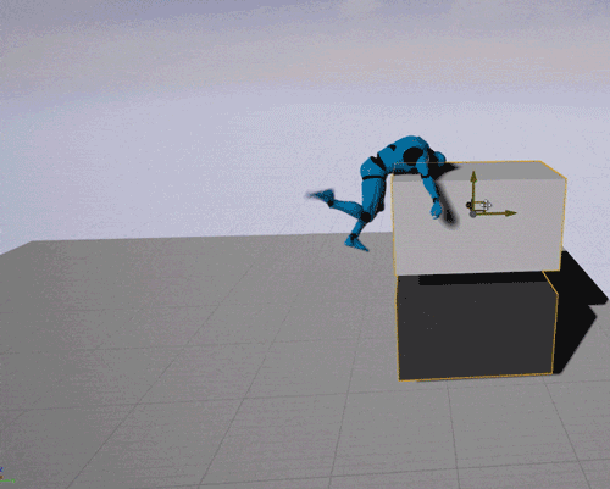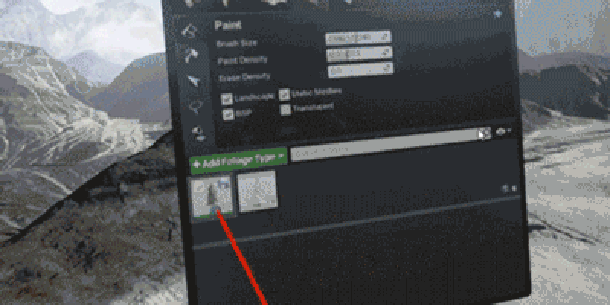Epic Games releases Unreal Engine 4.13

Epic Games has released Unreal Engine 4.13, the latest update to its game engine and development environment, bringing a range of new materials and rendering options, and adding support for Alembic import.
The update also adds extra features to the new Sequencer non-linear editor and the VR Editor – the latter including the option to paint meshes or place vegetation directly in VR mode.
Support for Voronoi noise and mesh decals, plus improved refraction effects
For artists, one of the key changes in Unreal Engine 4.13 will be the new materials and rendering options.
The Noise material node now supports Voronoi noise – also known as Worley noise – for recreating real-world materials with repeating cellular patterns ranging from cracked earth (see image at top of story) to marble.
There is also a new Mesh Decals feature that enables artists to ‘splat’ materials over the top of static meshes. The feature creates a second surface mesh over the base geometry with its own topology and properties.
New rendering options include a new Pixel Normal Offset refraction mode that uses the vertex normal as a reference, and computes the refraction offset from how different the per-pixel normal is from the vertex normal.
Suggested uses include flat water surfaces, for which the new mode generates more accurate refraction.
Alembic file import and other new animation options
Another big change is the option to import files in Alembic format, including static meshes, geometry caches and skeletal meshes – the latter an efficient way to import animations in which vertex count remains constant.
Alembic support is still officially described as “experimental”, although it seems to be enabled by default.

Animators also get a second experimental feature: the new physical animation component, which enables artists to drive skeletal mesh animations through ‘physical motors’ – external forces, essentially.
Users can set motor strengths directly, apply readymade physical animation profiles inside UE4’s Physics Asset Tool, or create their own custom profiles. It’s possible to switch between profiles at runtime.
The update also adds ‘Pose Assets’, a new type of animation asset consisting of a set of named bone poses.
Pose Assets can be blended additively, enabling animators to use a similar workflow for bone-based facial animation as for conventional blendshape-based animation.
More options for recording gameplay data for editing within Sequencer
Both of the big new toolsets from the previous two updates also get new features.
Sequencer, the new non-linear editor introduced in Unreal Engine 4.11 gets new features in the Sequence Recorder, used for capturing live gameplay for use as the basis of a cinematic.
New options include the ability to specify arbitrary components and properties to record; and to record selected actors and automatically create a camera cuts track if the camera is recorded.
Sequencer can also now import or export edit decision lists in CMX format, making it possible to exchange data with offline applications like Premiere Pro; and can import animations in FBX format.

Paint meshes or place vegetation directly inside the VR Editor
The VR Editor introduced in Unreal Engine 4.12 also gets quite a few new features, including the option to paint meshes – you can also access the Color Picker – or spray down foliage directly within VR mode.
There is also a new in-editor ‘flashlight’ option, intended to enable users to test how light interacts with materials – or simply to light up dark parts of a level.
It is also now possible to take screengrabs or launch the game from within the VR Editor; and the Editor is now automatically launched or exited when the user puts on a VR headset.
Hundreds of other new features listed on Epic’s blog
Other features in Unreal Engine 4.13 include shadow map caching for movable lights, improved landscape tesselation, and a range of rendering and performance improvements on mobile platforms.
You can read a full run-down of the new functionality via the link below.
Pricing and availability
Unreal Engine 4.13 is available for 64-bit Windows 7+, Mac OS X 10.10.5+ or Linux. Use of the editor is free, but Epic takes 5% of gross revenues beyond the first $3,000 per quarter for any product you release commercially.
